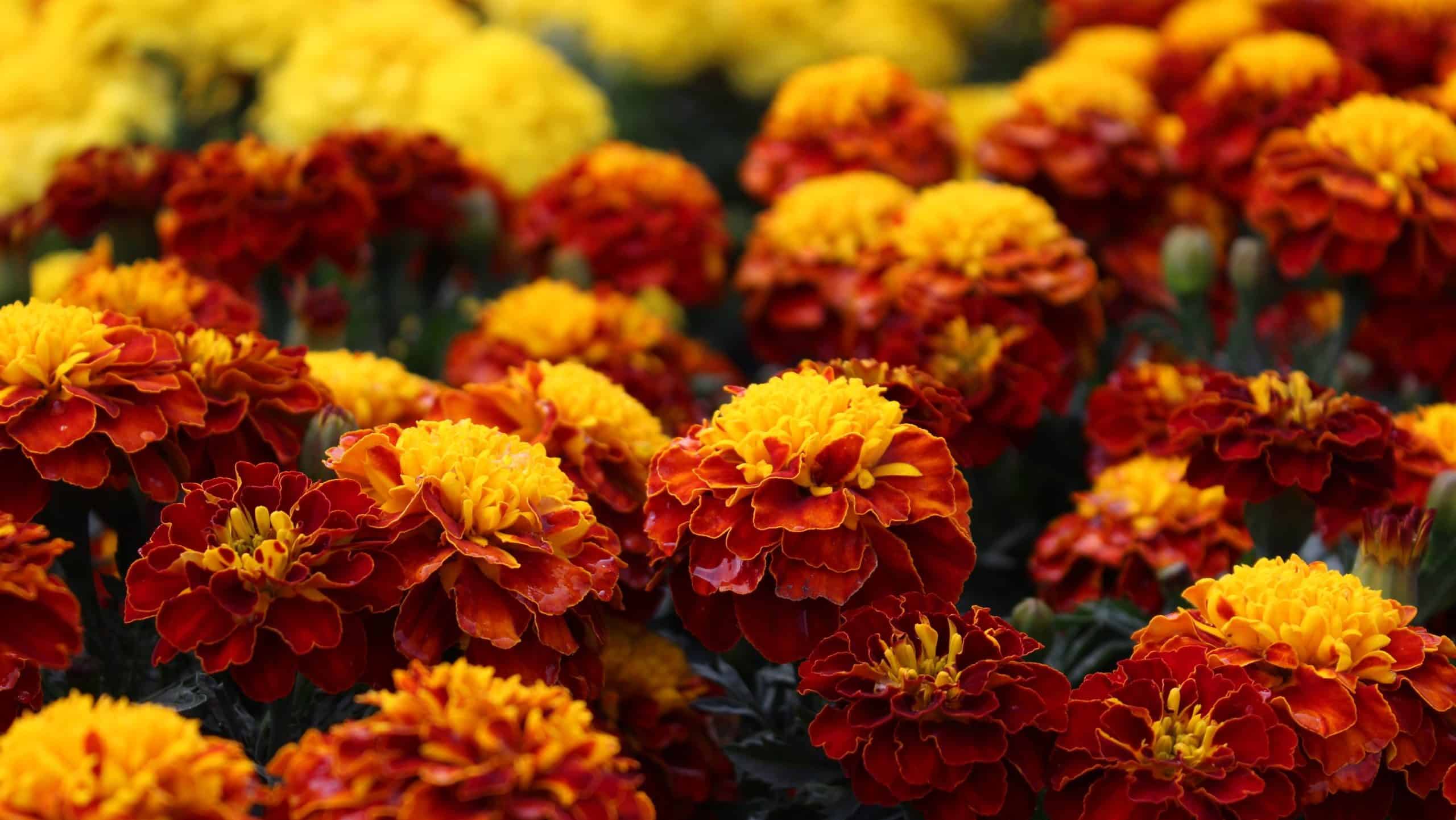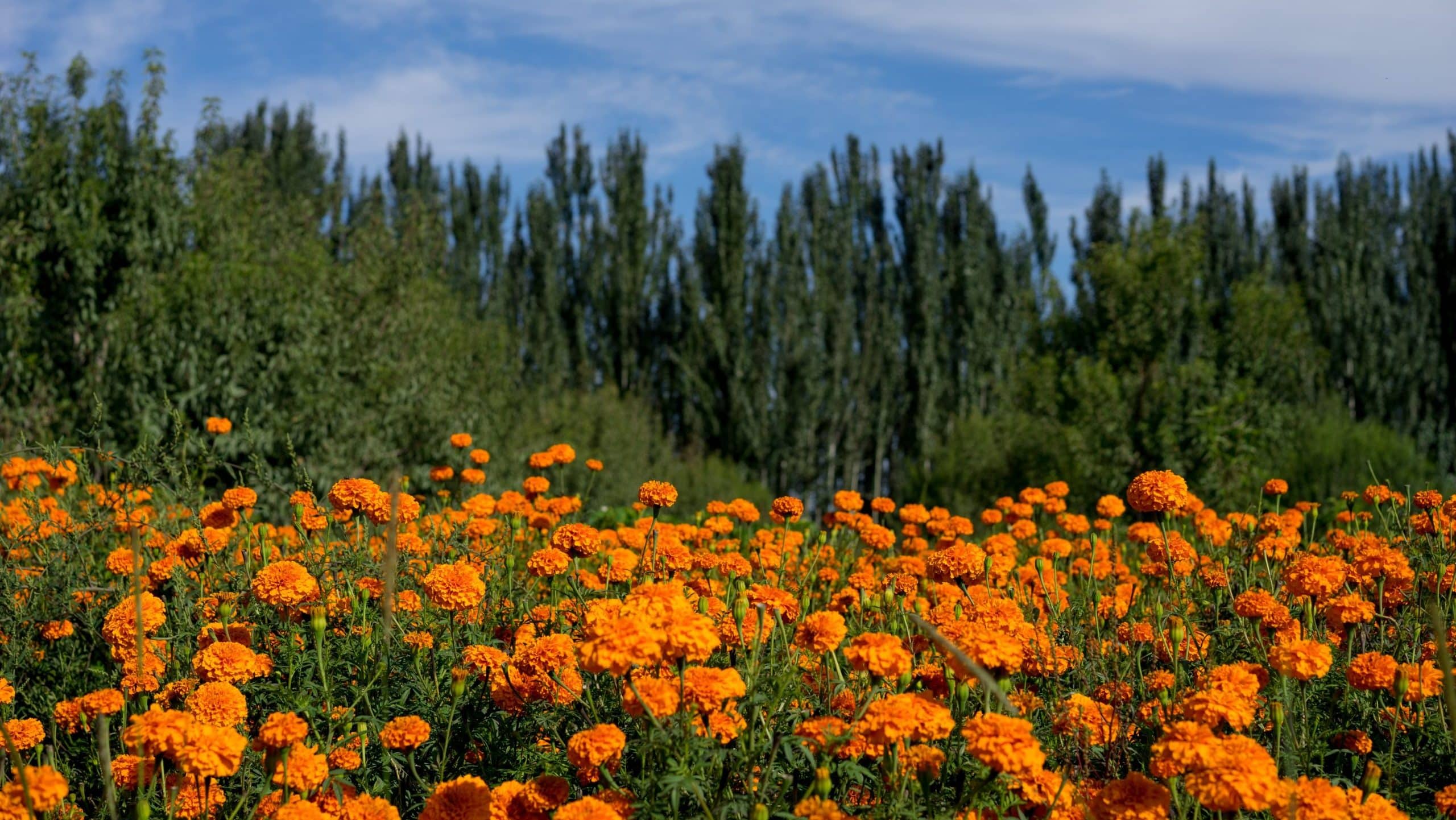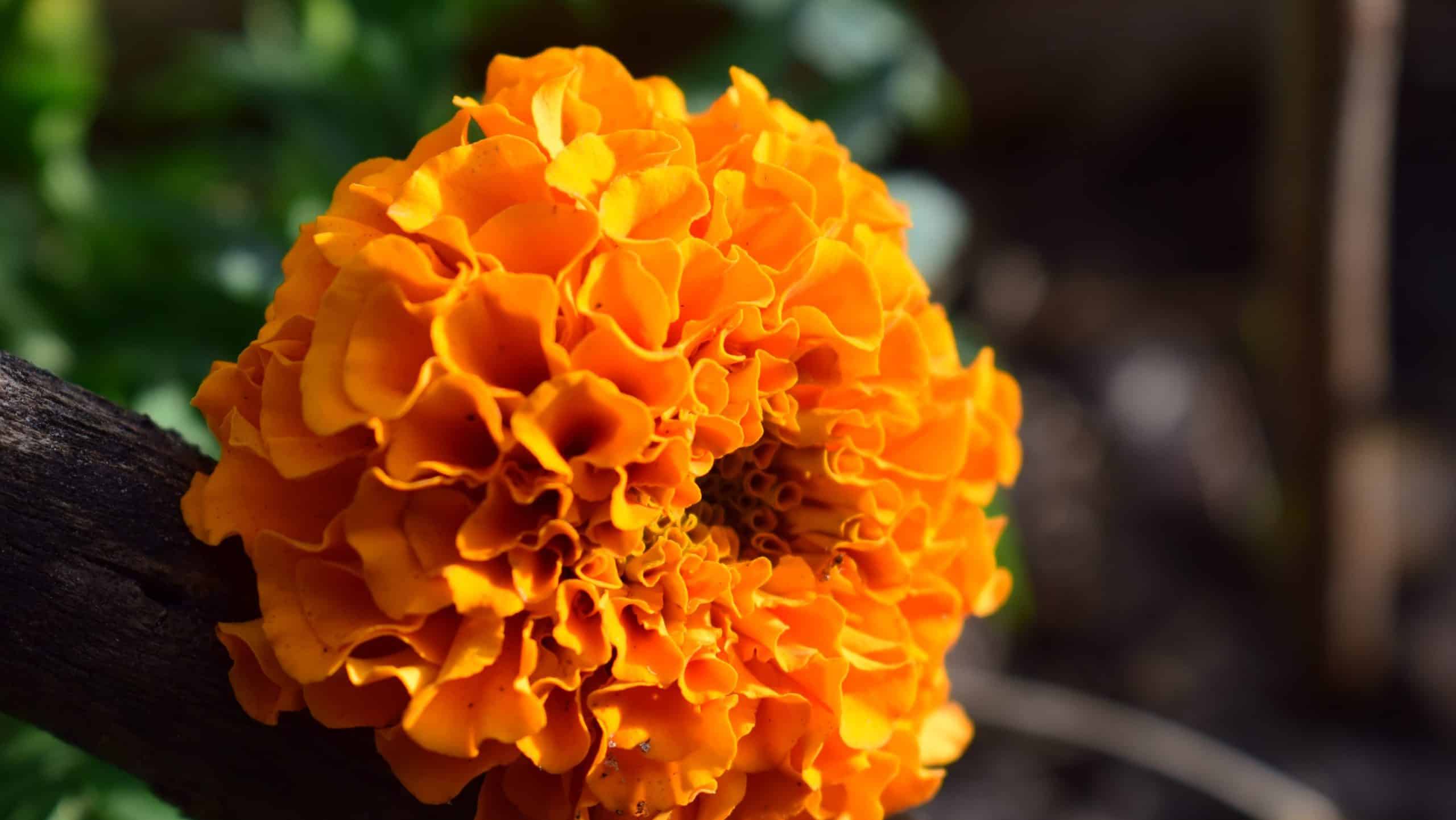Table of Contents
Get this, marigolds punch above their weight when it comes to being showstoppers in vegetable gardens. These trouble-free plants sprout a colorful ring of cream to bright yellow and variegated reds, adding that splash of color to your patch of calm. Some marigolds will grow squat close to the ground barely managing six inches, while others stand tall, up to three feet waving towards the matchless sky.
Now, to reap maximum benefits from marigolds, you must know where and how to plant them. This article directs you on how and where to do it. It also details the tips and tricks to grow the marigolds. But first, why should you plant them in your vegetable garden?
Reasons to Incorporate Marigolds in Your Vegetable Garden
Sit yourself down now; this might surprise your socks off, but marigolds are practical magic amongst vegetable plants. Here are some of the reasons to plant them:
As Companion Plants
Planting marigolds in between the rows of your veggies for an organic pest control, like a super affordable, green-thumbed bouncer. Marigolds, like that amazing friend who always has your back, swoop in and lure pests away from your precious greens. They also recruit beneficial insects to kick those annoying bug butts. It’s quite the intricate garden dance, all laid out for you, making growing veggies a smidge easier. So sit back, and let your marigold plants mingle and shake things up a bit.
Effective Trap Crop
They make a pretty solid trap crop for pests, luring the creepy crawlies away from your more valuable crops like carrots that need to be safe from carrot root fly. It’s like throwing out a decoy to save the real treasure. For example, slugs love marigolds like bees love honey, so these marigolds act like a bug buffet, drawing in the greedy enemies so that your other plants remain untouched and unbothered.
Chemical Nematodes Protection
These thread-like creatures, part of the Phylum Nematoda Express, can give your plants a hard time but marigolds? They tell ‘em to park their circus somewhere else. As a famous companion plant, marigolds are pretty good at producing compounds in their roots that act like nematicides. And even when marigolds are infested, they ensure that their nematode enemies go down with them. Talk about taking one for the team!

Where to Plant Marigolds in the Vegetable Garden for Maximum Benefits
Now that you’re convinced about roping in marigolds to do some heavy lifting in your vegetable gardens, let’s talk locations. And don’t worry; there won’t be a geography quiz at the end.
Plant Marigolds Near Specific Plants for Best Results
Let the marigolds share some room with certain plants for optimal results. Think of them as garden border guards, overseeing and protecting the nice green neighborhood. Plus, they clean up well too.
On the Border – Practical and Decorative
Plant marigolds in vegetable gardens, especially in planters, hanging baskets, or along the beds or borders. This way, it serves two purposes. Practically speaking, it gives your veggies a much-needed ally against pests and even enriches the soil.
From a purely vain point, it jazzes up the garden with a colorful border that would make even professional landscapers nod in approval.Them growing in your garden organically is a sight to behold, adding to the diversity of plants and ensuring the soil remains happy and fertile. So, folks, a marigold border is not just practical, it also has a decorative edge to it.
How to Plant and Care for Marigolds in the Vegetable Garden
Marigolds in your vegetable garden is like adding vibrant tie-dye to a band t-shirt merch booth. They draw attention and provide a lovely contrast against the greenery. But hold on, knowing where and when is crucial, but how to plant them is the star player in this game. So grab your garden gloves and let’s dive in.
Sow Marigold Seeds
Sowing the seeds is one of the best planting ways. This is because they will grow in the best way to act as trap crops. To do so, you will plant a circle of marigold bodyguards around your precious crops. Sure, you might lose a few players to the slugs drawn to the marigolds, but it’s a small sacrifice to protect the key players on your garden team. Plant, protect, repeat.
Transplanting
Rushing for instant color in your vegetable garden? No worries, marigolds got you covered. Instead of waiting for seeds to turn into plants, marigold transplants are a shortcut to a colorful garden.
Just head over to the nearest garden nursery and grab some marigold plants. They’re affordable, abundant, and ready to make your garden pop. Just plant them 10-12 inches apart – literally giving them some growing space. After relocating them to your garden, water them well. Doing so helps these transplants set down new roots in their new garden home.
Strewing the Seeds
Another way to plant your marigolds is to throw caution to the wind and just strew the seeds randomly. A kind of garden confetti if you will. Just spread those seeds throughout your vegetable gardens, wherever you find some open spaces. It’s like parking in the city – if you spot an open space, grab it!
Remember, the seeds can be spread in clusters or solo. Randomly spreading one color of marigold tends to give your garden a more cohesive look, kind of like a football team all wearing the same jerseys. It’s a delightful chaos, an organized anarchy that makes your garden look more attractive while keeping those pesky pests in check.

Useful Tips and Tricks for Growing Marigolds in Your Vegetable Garden
Growing marigolds isn’t labor-intensive. However, you must do it right for best results. Here are some tricks in the gardening playbook.
Check on Soil Quality
One final thing to remember, the soil for growing marigolds needs to be more A-grade than an honors student. At the end of the season, chop those marigold plants and use them as organic matter for the soil. This might seem savage, but it’s more like a natural cycle-of-life ritual. This move might not kill harmful nematodes, but it increases organic matter, which bumps up the beneficial soil life like a support crowd cheering at a ball game. This beneficial soil crowd can help keep those troublemaker nematode numbers in check. Feed the soil and the soil feeds your plants, it’s the classic circle of life – garden edition.
Make Sure Your Marigolds Have Plenty of Sunlight
Once you kick off with marigold planting, remember they’re sunbathers. Picture those beach loungers who camp at the same spot from sunrise to sunset, wanting every inch of their skin gloriously tanned. That’s your marigold. These flowers demand around six to eight hours of full sunlight per day. Keep marigolds in the shade and they start pouting like a kid denied an ice cream cone, vulnerable to diseases like powdery mildew and bloom failure. It’s best to serve them sunny spots on a silver platter for ideal growth.
Deadhead the Marigold Frequently
First off, every plant manager should know about deadheading. It’s a fancy word for snapping off the finished flowers to encourage new blooms. It’s like cutting the grass. When blooms are spent, just nip those buds, it won’t hurt. This simple act can mean a world of difference to keep your marigold squad blooming all season long. Plus, it makes the plants look tidier, like getting a fresh, new haircut. Regular deadheading keeps your marigolds as lively and fresh as the cheerleaders at halftime.
Avoid Overwatering
Who doesn’t love a good watering session! It’s simple, relaxing and it lets your green pals know you care about them. But here’s a little secret. With marigolds, you’ve got to be a bit reserved, just like holding back on that last slice of pizza that’s tempting you. Let me break it down for ya. Marigolds can be a touch ‘diva-like’ and don’t care for overindulgence in the hydration department.
Don’t Apply Fertilizer During Growth
Now listen, we all love a good boost, right? Second cup of coffee, little extra sugar on the cereal. But when it comes to marigolds, fertilizing is like an unnecessary encore. Sure, you give them some oomph at planting time, but anything more? It’s like trying to rev up a car already in the fifth gear. Too much nitrogen and they’ll go all over the top, producing foliage that could rival a small forest but with only a sprinkling of flowers. You don’t want knock-off Christmas trees, you want beautiful blooms, so curb that fertilizing enthusiasm, pal.
Mulch for Better Outcome
Just like keeping your paws warm in winter with gloves, marigolds love a good ‘mulch mitten’. This is one time when their ‘diva’ behavior makes sense – a good layer of mulch keeps their feet cozy and helps maintain the right soil conditions. Think about it as tucking your plants in with a cozy blanket. Trust me, they’ll reward you with a killer performance worthy of a standing ovation!

In Conclusion: Unleashing the Full Potential of Marigolds in Your Vegetable Garden
Alright then, there you have it. The rundown on getting the biggest bang for your buck with those humble marigolds. From adding a brilliant pop of color to your veggie patch, to downright bullying those pesky pests and annoying nematodes right off your beloved plants, marigolds sure do pack a powerful punch.

I’m John, a “seasoned citizen” and an avid gardener. I live in Minnesota, where our weather and growing conditions can be harsh and challenging. Over the years, I have learned a thing or two about being successful in growing things. I have curated these tips, which I think are helpful for the beginning gardener and the seasoned experts. If you have feedback, let me know in the contact form.




